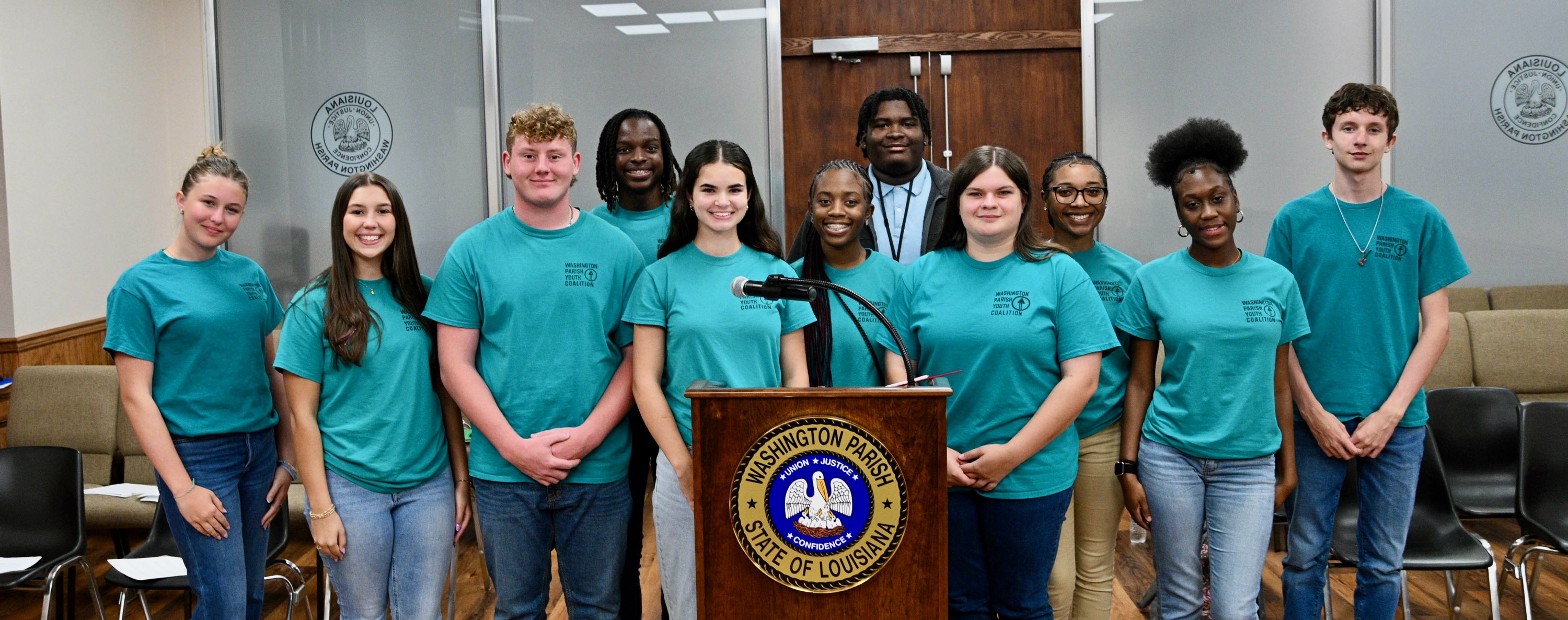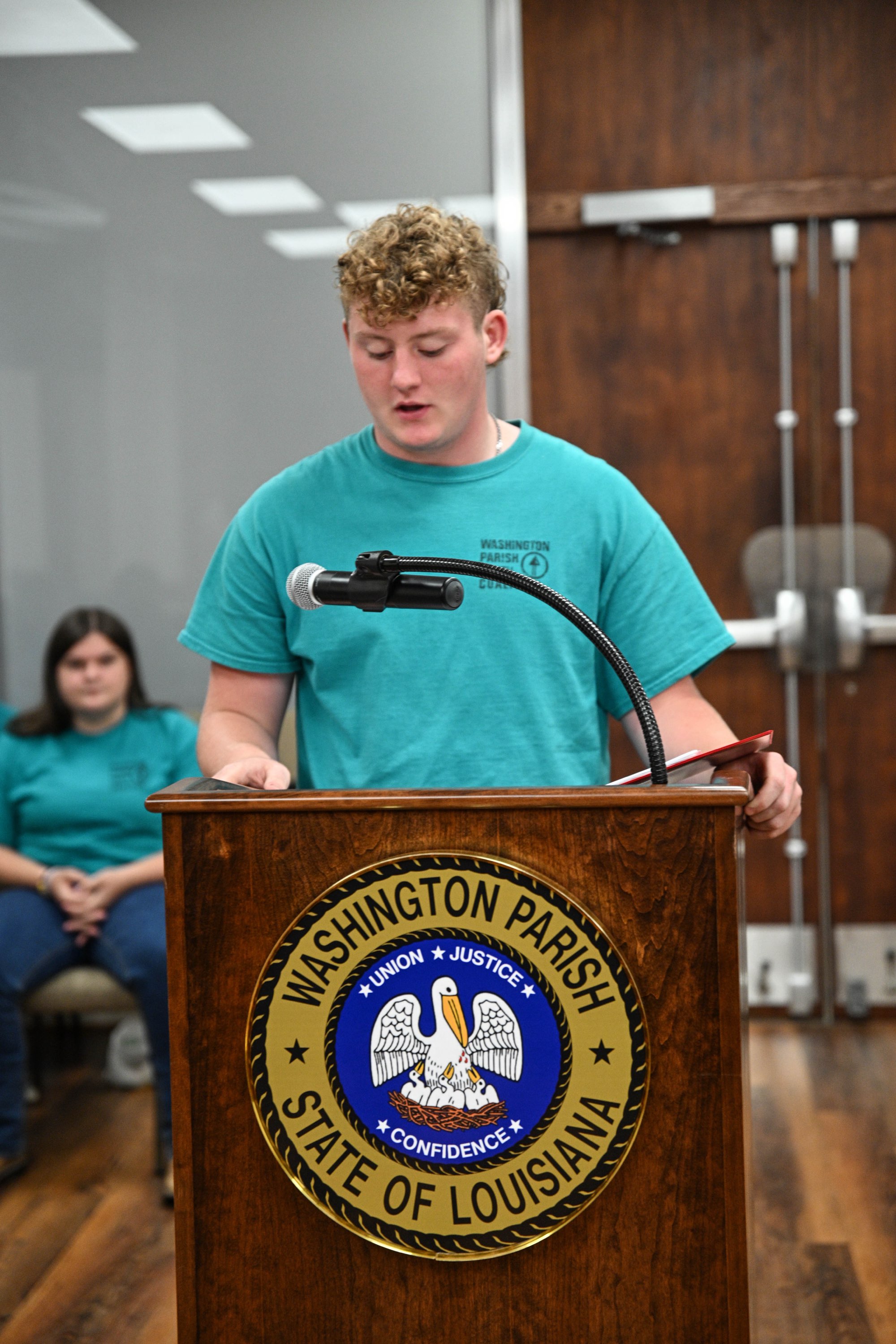|
Back to Prevention Stories
Social Hosting Presentation
Hosted by:
Washington Parish Government Council

Please briefly describe your Communities Talk activity.

How does alcohol and other drug misuse affect your community?

Washington Parish, a small rural community with a population of approximately 44,000, faces significant challenges related to substance misuse. Alcohol consumption is particularly problematic, with events like Mardi Gras contributing heavily to this issue. The Caring Communities Youth Survey revealed that over 50% of teens find it easy to obtain alcohol at home with parental permission. Additionally, more than 90.8% of teens reported knowing students who drank at proms and graduation parties, according to local youth listening sessions. Furthermore, Washington Parish has the highest rate of overdose deaths in the state of Louisiana, based on findings from the Regional Health Survey. To combat these issues, ADAPT Inc. is working diligently to reduce these numbers through various initiatives. These include prevention programs in the school systems, youth coalition training, community outreach at fairs and festivals, and critical partnerships with local and state departments to spread awareness, prevention, and treatment.

Which prevention strategy(ies), as defined by SAMHSA’s Center for Substance Abuse Prevention, best fit your Communities Talk activity?
- Environmental Strategy - focuses on establishing or changing community standards, codes, and attitudes thereby influencing incidence and prevalence of alcohol and other drug use within the community. The strategy depends on engaging a broad base of community partners, focuses on places and specific problems, and emphasizes public policy.
- Community-Based Process Strategy - focuses on enhancing the capacity of the community to address AOD issues through organizing, planning, collaboration, coalition building, and networking.
- Information Dissemination Strategy - focuses on improving awareness and knowledge of the effects of AOD issues on communities and families through “one-way” communication with the audience such as speaking engagements, health fairs, and distribution of print materials.
- Education Strategy - focuses on “two-way” communication between the facilitator and participants and aims to improve life/social skills such as decision making, refusal skills, and critical analysis.

What goal(s) did you hope to accomplish with your Communities Talk activity?
- Hold meetings or discussion groups on alcohol and/or other drug misuse prevention.
- Develop strategic plans to reduce and prevent alcohol and/or other drug misuse.
- Implement social host ordinances.
- Work with my local legislators or policymakers to educate about the importance of changes to, or recommend enforcement of, existing laws and policies.

Did you accomplish your goal(s)?
Yes

What challenge(s) did you face in planning your activity this year?

How did you overcome these challenges?
To address the challenges we faced, particularly with scheduling, we took several steps to ensure the success of our Communities Talk activity. We coordinated closely with the students from the Washington Parish Youth Coalition, ADAPT staff, and the Parish council members to find a suitable date and time for the town hall presentation. We sought help from various community stakeholders and remained flexible, adapting our plans as needed to accommodate everyone's availability. Although scheduling conflicts were our primary challenge, we anticipated these issues and had contingency plans in place to reschedule or adjust our timeline if necessary. Overcoming these scheduling challenges allowed us to hold a successful and well-attended town hall presentation on June 10, 2024. From this experience, we learned the importance of proactive communication, flexibility, and having backup plans to manage conflicts effectively. This improved our ability to execute the event smoothly and ensured that our message about the dangers of underage drinking reached our parish council members.

What are your next steps?

- Host follow-up meetings or activities
- Expand our coalition with new partnerships in the community
- Support new prevention policies, legislation, or social ordinances
- Create a public education campaign to raise awareness and/or change behaviors around underage drinking (i.e., create PSAs and other promotional materials)

If you’ve conducted Communities Talk activities in prior years, how has your repeated participation contributed to progress in achieving your prevention goals?
Our repeated participation in Communities Talk activities over the years has significantly contributed to progress in achieving our prevention goals. Through open doors and continued interaction within the community, we have built strong relationships and trust with local residents, leaders, and organizations. Our investment in these ongoing efforts has ensured a consistent presence and message about the dangers of underage drinking. This continued engagement has allowed us to reinforce our prevention messaging, making it a persistent part of the community dialogue. By being invested and maintaining a consistent presence, we have been able to address concerns more effectively and foster a supportive environment for our initiatives. These efforts have collectively strengthened our impact, bringing us closer to our prevention goals each year.

Organizations that conduct Communities Talk activities often involve other organizations in the planning and execution of events. Please indicate which type(s) of organizations you involved in your activity planning.
- Faith-based based organizations
- Law enforcement
- Youth-led organizations
- Secondary schools
- Elementary schools
- Local chapters of national organizations
- Charitable organizations
- Local businesses
- State and local government agencies (e.g., public health departments)

Which of the following best describes the primary audience(s) for your Communities Talk activity?
- Youth
- Parents
- Teachers or other education staff
- Prevention specialists and volunteers
- Law enforcement officials
- Legislators or policymakers
- Youth leaders (e.g., coaches, parks and recreation personnel, and scouting leaders)
- Healthcare providers

How did you reach and engage your primary audience(s) to encourage them to participate in your activity?
Our primary audiences participated in the social hosting activity through various engagement methods. We used messaging and reminders via email and social media to keep them informed and involved. Public notices were posted on social media platforms, and we distributed informational materials through local organizations. This multi-channel approach ensured that our messages reached a wide audience, encouraging active participation in the initiative.

Which Communities Talk resources (or other SAMHSA resources) were most helpful for your activity?
- Prevention-related webinars
- Prevention videos, such as College Drinking: Prevention Perspectives
- SAMHSA’s Event Planner
- Tips & Tools for Hosting a Virtual Event
- StopAlcoholAbuse.gov website
- Communities Talk website
- Communities Talk toolkits
- Communities Talk social media content (e.g., Facebook, Twitter)
- Communities Talk Find an Activity Map
- These resources were helpful to give guidance, ideas, and direction on how to make our Communities Talk campaign successful.
|
|